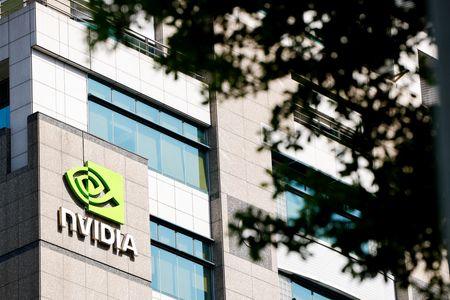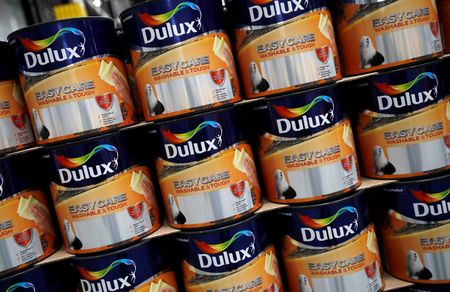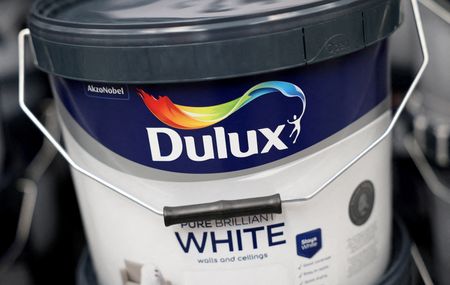By Arsheeya Bajwa and Stephen Nellis
(Reuters) -Nvidia forecast quarterly revenue well above Wall Street estimates on Wednesday and CEO Jensen Huang touted blockbuster demand for its AI chips from giant cloud providers.
Shares of the AI market bellwether jumped 5% in extended trading, setting up the company to add $220 billion in market value.
The results calmed – at least temporarily – investor nerves frayed over concerns that an AI boom has outrun fundamentals. Global markets have looked to the chip designer to determine whether investing billions of dollars in AI infrastructure expansion has resulted in an AI bubble.
Ahead of the results, doubts had pushed Nvidia’s shares down nearly 8% in November, after a surge of 1,200% in the past three years. The broader market has declined almost 3% this month.
“Blackwell sales are off the charts, and cloud GPUs are sold out,” Huang said in a statement. “The AI ecosystem is scaling fast — with more new foundation model makers, more AI startups, across more industries, and in more countries. AI is going everywhere, doing everything, all at once.”
On a call with analysts, he said: “There’s been a lot of talk about an AI bubble. From our vantage point, we see something very different.”
The world’s most valuable company said it expected fiscal fourth-quarter sales of $65 billion, plus or minus 2%, compared with analysts’ average estimate of $61.66 billion, according to data compiled by LSEG. Nvidia’s third-quarter sales rose 62%, their first acceleration in seven quarters.
Sales in the data-center segment, which accounts for a majority of Nvidia’s revenue, grew to $51.2 billion in the quarter ended October 26. Analysts expected sales of $48.62 billion, according to LSEG data.
But some analysts said the earnings report may not be enough to quell AI bubble fears completely.
“The concern that AI infrastructure spending growth is not sustainable is not likely to ebb,” said Stifel analyst Ruben Roy.
Cloud giants including Microsoft and Amazon are investing billions in AI data centers, and some investors have argued that these companies were artificially boosting earnings by extending the depreciable life of AI compute gear, such as Nvidia’s chips.
POSSIBLE IMPEDIMENTS TO GROWTH
Factors beyond Nvidia’s control could impede its growth.
“While GPU demand continues to be massive, investors are increasingly focused on whether hyperscalers can actually put this capacity to use fast enough,” said Jacob Bourne, an analyst with eMarketer. “The question is whether physical bottlenecks in power, land, and grid access will cap how quickly this demand translates into revenue growth through 2026 and beyond.”
Nvidia’s business also became increasingly concentrated in its fiscal third quarter, with four customers accounting for 61% of sales, up from 56% in the second quarter.
At the same time, Nvidia sharply increased how much money it spends renting back its own chips from its cloud customers who otherwise cannot rent them out, with those contracts totaling $26 billion – more than double its $12.6 billion in the previous quarter.
Still, analysts and investors widely expect the underlying demand for AI chips, which has powered Nvidia’s results since ChatGPT’s launch in late 2022, to remain strong.
Huang said last month the company has $500 billion in bookings for its advanced chips through 2026.
Nvidia said on Wednesday it expected adjusted gross margin of 75%, plus or minus 50 basis points, in the fourth quarter, compared with market expectations of 74.5%.
(Reporting by Arsheeya Bajwa in Bengaluru and Stephen Nellis in San Francisco; Editing by Arun Koyyur, Sayantani Ghosh and Matthew Lewis)











